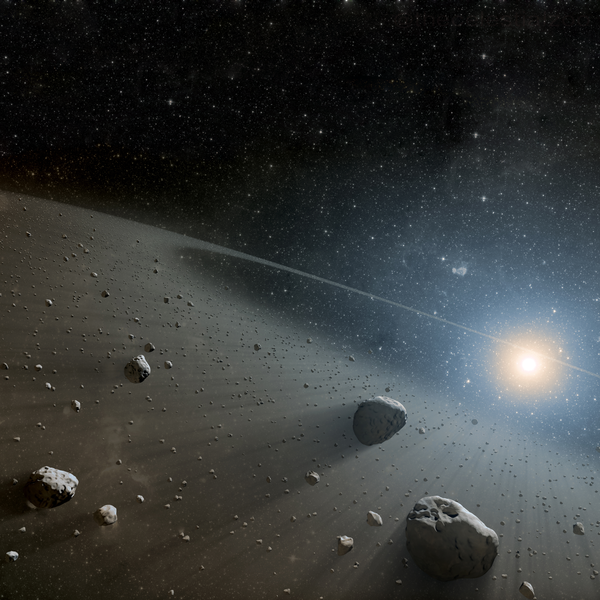An asteroid named, 2022 NF, will make a close approach yet a safe fly by on Earth this week, according to NASA's Jet Propulsion Laboratory.
The small asteroid, which is comparable to the size of a regular bus, is expected to pass our planet on Thursday evening, July 7.
Asteroid 2022 NF

No one knew asteroid 2022 NF will be coming until just a few days ago, according to Live Science.
When it does, it will be just 56,000 miles (90,000 kilometers) or 23% of the median distance between the Earth and the Moon.
Astronomers used data from the Panoramic Survey Telescope and Rapid Response System (Pan-STARRS), which led to the detection of the sneaky space rock on Monday, July 4.
Also Read: Asteroid Impact: NASA Estimates Space Rock the Size of the Great Pyramid May Hit Earth on May 6
Planetary Defense Measures
A planet-killing asteroid impact or asteroid strike is extremely rare in contemporary times. This has been evident since the onset of both pre-recorded and recorded history of human civilization.
There were also no reports of such catastrophic event after the Chicxulub asteroid event approximately 65 million years ago, which wiped out the dinosaurs and most life forms at that time, according to the Planetary Science Institute (PSI).
Abundant geological evidence shows that a roughly 10-kilometer (6-mile) asteroid struck the Earth, as per PSI.
The direct hit caused a global-scale explosion and left an impact site, which is known today as the "Chicxulub crater" in Yucatan Peninsula, Mexico.
Still, NASA and other space agencies are continuously monitoring near-Earth objects (NEOs) just like the 2022 NF asteroid and other space rocks that preceded it.
While all asteroids are of great concern, space authorities focus more on large space objects that poses a great danger, particularly if their trajectory shift towards a direct hit on Earth.
NASA DART Mission
In November 2021, NASA launched the so-called Double Asteroid Redirection Test (DART) mission.
The program aims to test a method of deflecting an approaching asteroid and other NEOs through kinetic impact.
The DART mission includes a spacecraft sent into space during the launch and is projected to directly hit Dimorphos, a 525-foot-wide asteroid, in September 2022.
The head-on collision is reportedly not expected to destroy the Dimorphos but rather potentially change its orbital path.
The DART program was developed almost a decade before the massive and potentially hazardous asteroid named, 99942 Apophis, to make a close approach to the Blue Planet in April 2029.
It is considered to be the first planetary defense test mission, which was coordinated along Elon Musk's SpaceX company.
Known Earth Impactors
In March 2022, a large asteroid became Earth's "fifth known impactor" to be detected before it hit off the coast of Iceland, according to The Planetary Society.
The asteroid impact released an energy comparable to a 4.0 magnitude earthquake but with no reported casualties.
Other notable asteroid impactors were the asteroid strike in the city of Chelyabinsk, Russia, in 2013, which released the same amount of energy similar to 500 kilotons of TNT.
The strike occurred above ground and did not cause any direct damage.
Related Article: NASA: Massive Asteroid to Make a Close Approach to Earth on May 27
© 2025 NatureWorldNews.com All rights reserved. Do not reproduce without permission.





